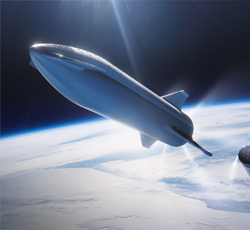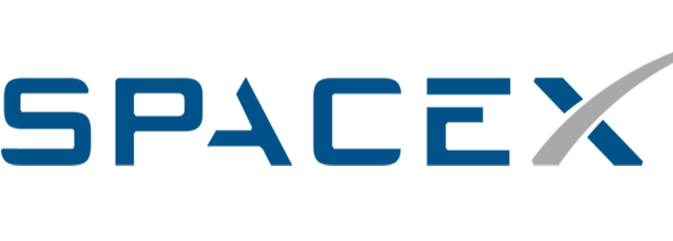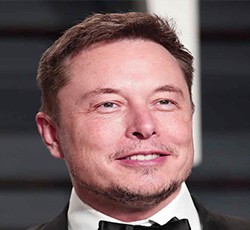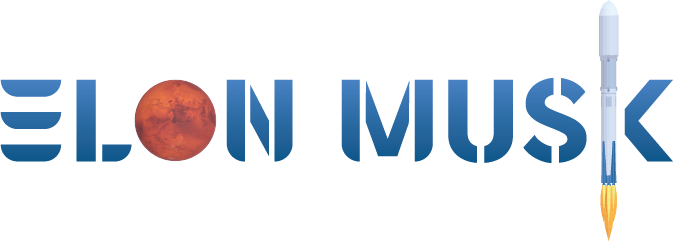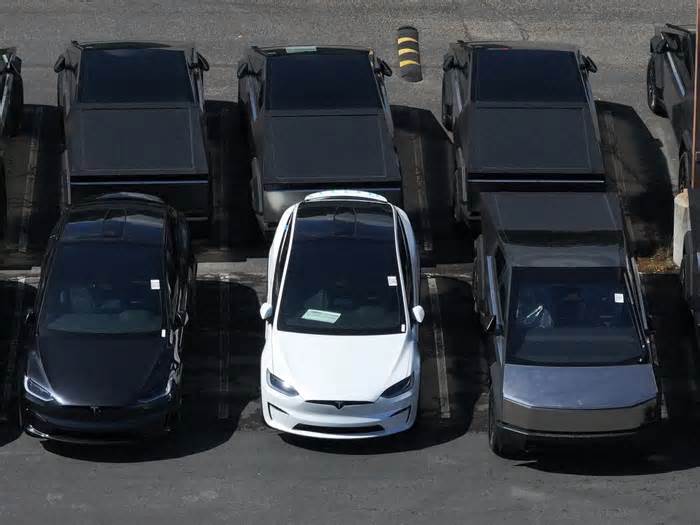
Elon Musk Unveils the Boring Company’s Car-Flinging Tunnel
- by Wired
- Dec 19, 2018
- 0 Comments
- 0 Likes Flag 0 Of 5

From a parking
lot in a sleepy, manufacturing-dominated suburb of Los Angeles, Elon Musk and his Boring Company on Tuesday night showed off what he believes is the best way to eliminate the scourge of traffic congestion: electric, autonomous vehicles bearing an extra set of wheels, shooting through thin tunnels at speeds up to 150 mph.
If that sounds a little fantasticalâwell, duh. Muskâs presentation, punctuated by a glitzy entrance aboard a Tesla Model X that traveled through the company's accent-lit, 1.14-mile test tunnel, filled in a few details about his ambitious plans to take on LA's traffic with new and improved tunnel-boring processes.1 But the test tunnel still seems to be a test tunnel, and the Boring Company still appears to be in a deeply experimental phase. A bevy of questions is yet to be addressed.
"I think this is, like, really a panacea," said Musk standing in front of the tunnelâwhich extends from a SpaceX parking lot into the city of Hawthorne, which sits just southeast of LAX and about 15 miles (as the crow flies) from downtown Los Angeles. Traffic, he said, âis like acid on the soul.â
A few big elements of the Boring Companyâs concept, which itâs calling âthe Loop,â have changed since Musk last presented it in May. Gone are the âelectric skates,â the platforms that were to ferry vehicles throughout an extensive tunnel network whose tendrils the company would like to one day spread throughout the LA metro area (and then the world). Instead, users will now have to mount specialized wheels on their own electric, autonomous vehicles, which will guide the vehicles along the tracks in the tunnels. These look a bit like bicycle training wheels, but sit parallel to the ground.
X content This content can also be viewed on the site it originates from.
Gone, too, is the Boring Companyâs 16-passenger pod conceptâthe centerpiece of what Musk once said was a system that would put pedestrians and cyclists first. This is a system meant to carry peopleâs carsâas long as they are fully electric and capable of driving themselves. For those without such vehicles, Musk said, cars would continually circulate the Loop system to pick up and drop off anyone who wants a ride. Press materials provided by the company boasted that each tunnel would one day be able to support 4,000 cars per hourâabout 16,000 passengers, provided each car is nearly full. Thatâs the capacity of about 11.5 full (but not packed) New York City subway trains.
Boring
âWe are no way saying there shouldnât be other means of public transport,â Musk remarked Tuesday night at the event. âLet us do everything we can along every direction to alleviate traffic.â
The technology is also far from complete. The car that traveled through the test tunnel, which the Boring Company used to give demo rides to fans and journalists, only hit speeds of around 50 mph, not 150 mph. (Musk said it was capable of traveling 110 mph.) Musk also admitted to the Los Angeles Times that the ride was bumpy, and that his team âkind of ran out of time.â
âThe bumpiness will not be there down the road,â he told the Times. âIt will be as smooth as glass. This is just a prototype. Thatâs why it's just a little rough around the edges.â
Hawthorneâs city council allowed the company's project to be fast-tracked, so to speak, through the environmental review process because it is a demonstration, not a functional form of mass transit, and because the city concluded that construction wouldnât disturb neighbors. Musk says the company digs so deeply underground that its tunneling isnât perceptible from above, and rightly notes that tunnels are safe in earthquake-prone spots like LA. The Boring Company spent just under two years and $10 million building this test tunnel.
Musk tweeted the Boring Company into existence in December 2016, when he cracked a joke about being so frustrated by LA traffic that he would buy a tunnel-boring machine and âjust start digging.â By early 2017, there was an honest-to-God hole in the SpaceX parking lotâthe beginnings of the test track that the company unveiled on Tuesday. Musk has argued that cities like LA can only quash traffic by going â3D down or 3D up,â and that flying cars (that would be up) are too dangerous.
Thus, his vision: layers of underground routes carrying hundreds of thousands of vehicles traveling at high speeds, transported into the netherworld by thousands of elevators woven throughout the sprawling city. (Musk likened system to "wormholes.") The Boring Company has said it will charge riders $1 each, will finance this vision itself, and wonât accept government funds.
Transportation engineers and urban planners have criticized the plan, which they argue does not address the underlying causes of trafficâlike bottlenecks at highway on- and off-ramps (or the elevator entrances and exits where cars will enter the system) and urban sprawl. The plan faces another foe: the public environmental review process, which can sometimes take more than a decade for an infrastructure project of similar ambition.
To pull this off, Musk has acknowledged he will have to bring down the cost of digging tunnels and speed up the process dramatically. Eventually, Musk has said, he would like his modified boring machine to beat his pet snail, Gary, in a race, increasing the standard boring pace by a factor of 14. (Professional tunnel engineers have publicly cast doubt on whether Muskâs innovations are possible. Also, the original Gary is long dead. The Boring Company now cares after Gary VI.) The CEO also has said that his tunnelsâ reduced widthâabout 12 feet at their widestâwill bring down costs as well.
Musk announced last summer that the soil unearthed by his tunneling efforts would be repurposed into bricks, which will be sold through another Muskian spinoff, the Brick Store LLC. The bricks already have been used to build a Monty Python and The Holy Grail-type tower on the grounds of SpaceXâs headquarters. What's more, the Boring Company has promised to release life-size Lego sets.
The company doesn't just have just one tunnel on its plate. Thereâs this one in Hawthorne, along with a plan to build a small system running between one of three LA Metro subway stations to Dodger Stadium. (Musk told reporters Tuesday he would like to build out the entire LA system by 2028, when the city will host the Olympics.)
Boring also has promised a Washington, DC to Baltimore connection, but hasnât received all the permits needed to get that project going. Plus, thereâs an idea for a high-speed connection between downtown Chicago and OâHare International Airport, which Musk has promised to build for no more than $1 billionâa pittance for a major project. The company is reportedly in the middle of an environmental review process there. (That project, which had been championed by Mayor Rahm Emanuel, may face political challenges now that Emanuel is leaving office.)
One project thatâs no longer on the Boring Companyâs list: another test tunnel in West LA. Boring pulled out of that project after settling a lawsuit with two local neighborhood groups, which argued the company was attempting to circumvent city rules by getting a metrowide project appealed piecemeal.
So yes, itâs been a long and confusing road to this point. Musk has proposed a raft of ideas associated with his tunneling. Many have been questionable, but most have been exciting, if for nothing but their audacity. But maybe this meandering is the way to the future. Itâs certainly the way of Musk, a man whoâs never been much for the traditional, stodgy way of doing things, where you mull over a plan, announce it in a carefully worded press release, then spend the next few years executing it just like you said you would. Some CEOs wear suits and sit in the backs of limos. Others emerge from tunnels in rumpled flannel. You decide which group make better showmenâand which change how things really work.
1Correction appended, 12/19/18, 1:40 AM ET: A previous version of this story misstated the length of the test tunnel. It is 1.14 miles long, not 1.4 miles.
More Great WIRED Stories
Please first to comment
Related Post
Stay Connected
Tweets by elonmuskTo get the latest tweets please make sure you are logged in on X on this browser.






 Energy
Energy